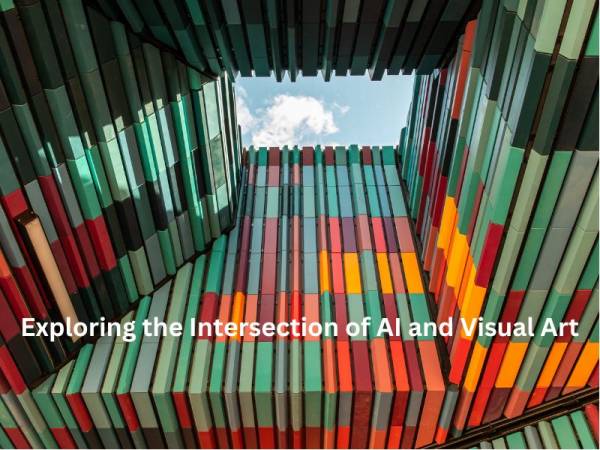Artificial Intelligence (AI) has permeated various industries, and the world of visual art is no exception. AI is revolutionizing the creative process, offering new tools and techniques that artists can harness to push the boundaries of their work. In this blog post, we will delve into the fascinating realm of AI and visual art, exploring how AI is influencing artistic expression and opening up new avenues for creativity.
 Generative Art: AI algorithms can generate art autonomously, producing unique and innovative pieces. Generative art relies on machine learning and deep neural networks to create images, sculptures, and installations. AI-powered generative models can learn from existing artworks and generate new compositions that reflect various artistic styles, challenging traditional notions of authorship and human creativity.
Generative Art: AI algorithms can generate art autonomously, producing unique and innovative pieces. Generative art relies on machine learning and deep neural networks to create images, sculptures, and installations. AI-powered generative models can learn from existing artworks and generate new compositions that reflect various artistic styles, challenging traditional notions of authorship and human creativity.
Creative Assistance: AI can serve as a valuable tool for artists, offering assistance in various stages of the creative process. AI-powered tools can suggest color palettes, recommend composition adjustments, and even offer ideas for artistic experimentation. Artists can collaborate with AI algorithms, leveraging their computational capabilities to enhance their artistic vision and push their creative boundaries.
Artistic Style Transfer: AI enables artists to explore different artistic styles and merge them into their own work. Style transfer algorithms analyze the characteristics of one artwork and apply them to another, creating fascinating combinations of artistic styles. Artists can experiment with blending techniques, eras, and genres, resulting in visually captivating and thought-provoking pieces.
Augmented Reality (AR) and Virtual Reality (VR): AI combined with AR and VR technologies offers immersive artistic experiences. Artists can create virtual worlds, interactive installations, and multimedia performances that engage the audience in unique ways. AI algorithms can enhance AR and VR experiences by recognizing and responding to user inputs, creating dynamic and personalized interactions.
Art Authentication and Restoration: AI plays a crucial role in art authentication and restoration. By analyzing patterns, brushstrokes, and other artistic characteristics, AI algorithms can help identify counterfeit artworks and detect signs of forgery. Additionally, AI-powered systems can aid in the restoration of deteriorated or damaged artworks, using image recognition and restoration techniques to preserve artistic masterpieces.
Data Visualization: AI assists in transforming complex data into visually appealing and informative representations. Data visualization techniques powered by AI algorithms enable artists to communicate complex ideas, trends, and patterns in visually engaging ways. Through data-driven art, artists can merge aesthetics with information, offering new perspectives and insights to the audience.
Collaborative Art Projects: AI facilitates collaboration between artists and machines, leading to the emergence of collective creativity. Artists can work alongside AI algorithms, exploring the symbiotic relationship between human intuition and machine intelligence. Collaborative art projects blur the boundaries between human and AI creativity, fostering a new era of artistic expression.
The integration of AI and visual art opens up exciting possibilities for artists to explore new frontiers of creativity. From generative art and creative assistance to art authentication and collaborative projects, AI enhances the artistic process, challenges traditional notions of authorship, and expands the possibilities of visual expression. Embracing AI in the world of art invites us to re-imagine the creative landscape, pushing boundaries and engaging in novel artistic dialogues between humans and machines.